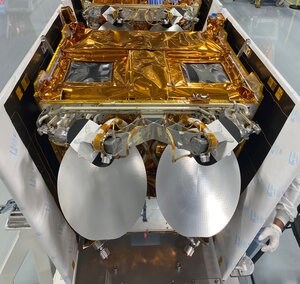Mars500: Scientific protocols
Effect of blue-enhanced light on alertness and sleep-wake behaviour
If astronauts are exposed to insufficient background lighting during their missions, they could experience physiological changes, which could have a detrimental effect on mission success. This could include disturbances in their sleep/vigilance, mental and physical performance, and metabolism.
A new visual sensory system has recently been discovered in humans: a non image forming visual system which detects light irradiance. The sensitivity of this new visual system peaks in the blue range of the visible light spectrum. Visual light exposure has a wide range of effects in humans: synchronisation of circadian rhythms and sleep; suppression of melatonin, which regulates biorhythms; increase in cortisol levels, which affects metabolism; regulation of heart rate; contraction/expansion of the pupil; and changes in mood, alertness and performance.
Subjects will be stimulated over several two-week periods with blue-enriched light. An evaluation will be made of the cumulative effect of the visible light in the Mars 500 isolation chamber on sleep-wake behaviour, sleep quality, subjective alertness levels, and circadian rhythms. Individual light exposure will be measured with newly- developed environmental sensors that are worn by each subject.
Sleep duration and quality will be measured with a sleep questionnaire. Sleep-wake activity will be continuously recorded via a small, wrist worn device (an 'actimeter', the size of a small watch). Computerised tests will be used to measure participants’ alertness and mental performance, and circadian rhythms will be determined by measuring melatonin levels in saliva.
Stimulation by blue-enriched light is expected to have a positive effect on circadian rhythms. A significant positive correlation between the amount of blue light stimulation and waking alertness and sleep quality in crewmembers is also expected to be observed.
Science Team: Luzian Wolf (AT) et al.















 Germany
Germany
 Austria
Austria
 Belgium
Belgium
 Denmark
Denmark
 Spain
Spain
 Estonia
Estonia
 Finland
Finland
 France
France
 Greece
Greece
 Hungary
Hungary
 Ireland
Ireland
 Italy
Italy
 Luxembourg
Luxembourg
 Norway
Norway
 The Netherlands
The Netherlands
 Poland
Poland
 Portugal
Portugal
 Czechia
Czechia
 Romania
Romania
 United Kingdom
United Kingdom
 Slovenia
Slovenia
 Sweden
Sweden
 Switzerland
Switzerland
























